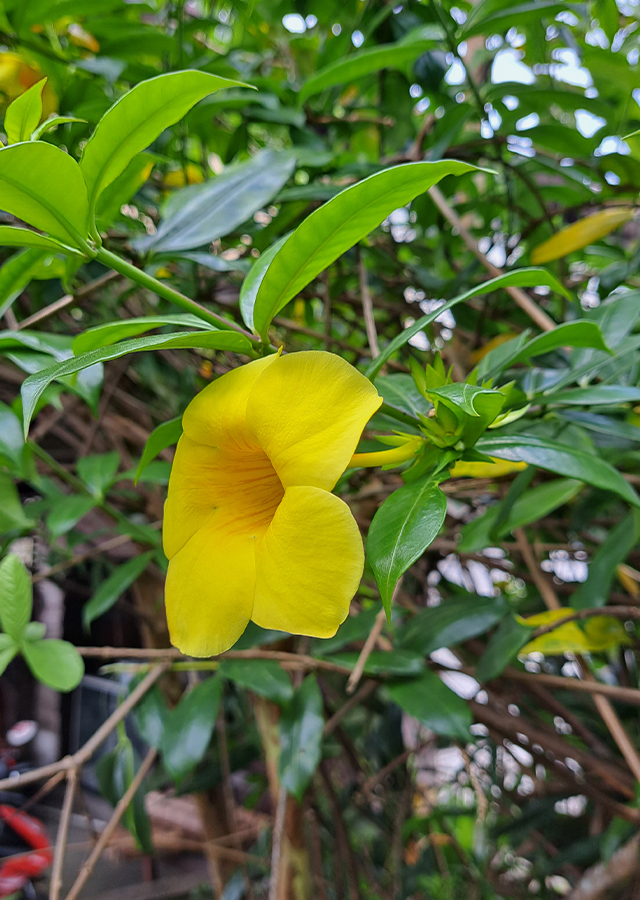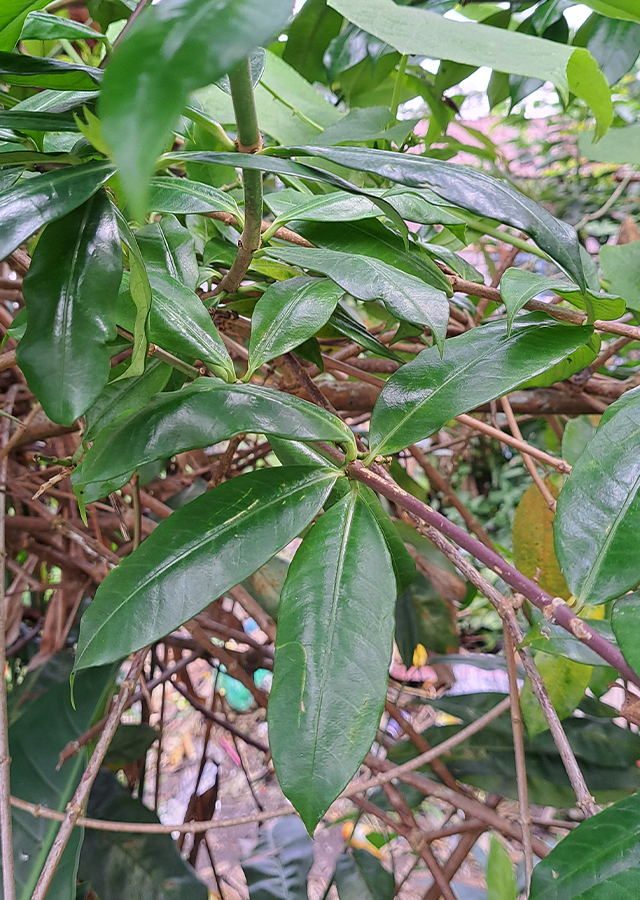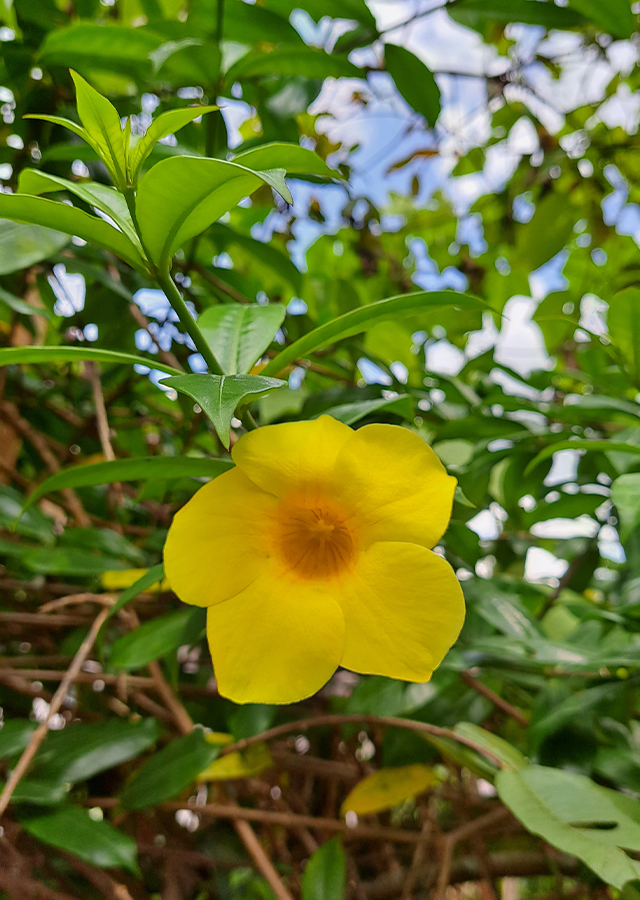Traditional Herbs from Allamanda schottii
What is Allamanda schottii Looks like??



Parts of Allamanda schottii that could be used
- Leaves
- Flowers
- Roots
- Stem
Allamanda schottii Distribution
Allamanda schottii is a plant that originates from Northeastern Argentina, Southern Brazil, Southeastern Brazil, and was introduced to Bangladesh, Southeastern China, Costa Rica, Galápagos, Hainan, Honduras, Southeastern Mexico, Panama, Puerto Rico and Taiwan. This species was first described by Johann Baptist Emanuel Pohl, who reported that A. schottii grew on the banks of the Para�ba river in 1827. In tropical areas, the fruit alamanda plant is often planted as a hedge, grown as an ornamental plant, and has become a weed in several countries. This plant has white sap coming out of its stems which can cause skin disorders and diarrhea. According to research, this plant has antiproliferative, cytotoxic, antileishmanial properties.Agroecology of Allamanda schottii
Alamanda fruit plants grow in organic matter-rich, moderately moist, well-drained soil in full sun. Flowers best in full sun. Best performance occurs in hot and humid climates, where night temperatures do not fall below 15.5 °C. Prompt pruning of flower scars will encourage the flowers to grow more blooms.
Morphology of Allamanda schottii
- Segmented cylindrical stem, with milky sap and sometimes small branches.
- Narrow leaves, opposite or whorl, 2 to 5 at each node, 8-10 cm long, 2-3 cm wide.", "Bell-shaped flowers with a golden yellow corolla, orange striped at the throat, up to 6 centimeters long, with a short and swollen tube, angular at the base, inflorescences in clusters (paniculate).
- The fruit is a round and spiny capsule, like rambutan.
Cultivation of Allamanda schottii
Propagation is done by stem cuttings.
Allamanda schottii, more details :
Chemical Content of Allamanda schottiiA mixture of sitosterol and stigmasterol, plumericin, scopoletin, ursolic acid, plumierede, isoplumericin, 1-(3,4-dimethoxyphenyl)-ethano-1,2-diol and scoparone, flavonoids (rutin, kaempferol, and quercetin).
Benefits of Allamanda schottii
Used as a laxative and vermifuge. Studies have shown antiproliferative, cytotoxic, antileishmanial properties.
Simplisia of Allamanda schottii
Another Facts for Allamanda schottii :
Synonym of Allamanda schottiiAllamanda cathartica var. schottii (Pohl) L.H.Bailey & Raffill, Allamanda neriifolia Hook., Allamanda brasiliensis Schott ex Pohl
Habitus of Allamanda schottii
Bush. Annual shrub, up to 1.5 m high.
Habitat of Allamanda schottii
- Riverside", "Forest", "Mountains", "Land
No comments:
Post a Comment